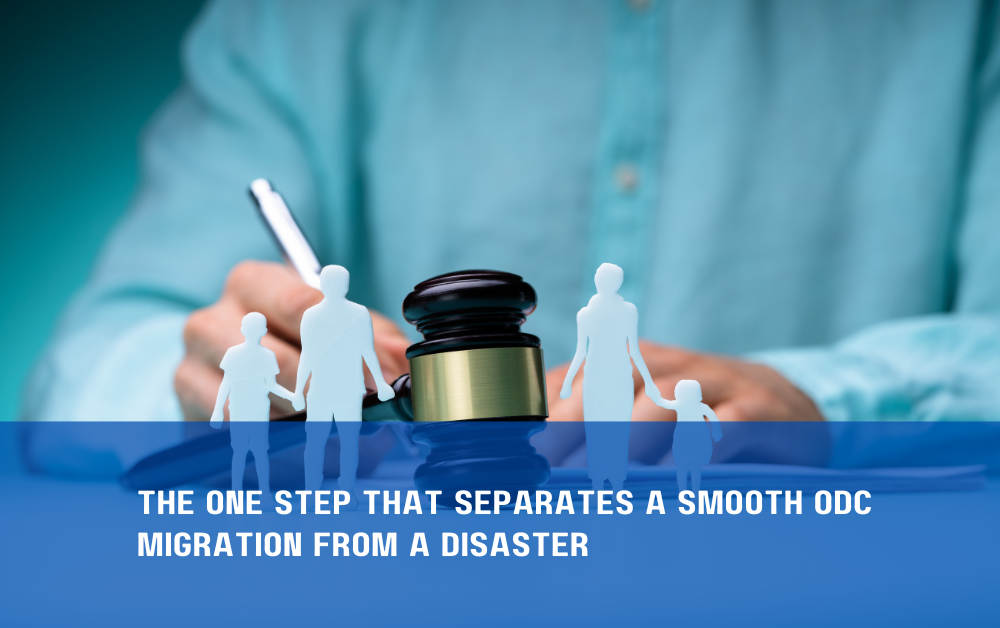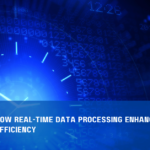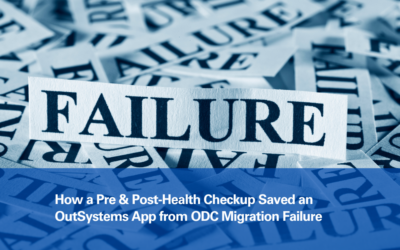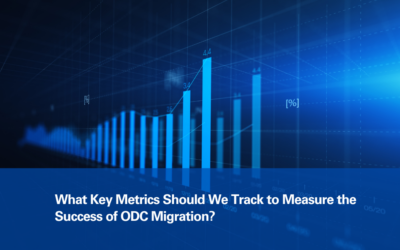The Rush to ODC—Are You Ready?
OutSystems Developer Cloud (ODC) is gaining momentum, and for good reason. It promises better scalability, stronger security, and a cloud-native approach that future-proofs applications. With businesses modernizing rapidly, moving to ODC seems like the logical next step.
But here’s the catch—migration isn’t a simple copy-paste job. Unlike traditional upgrades, shifting from OutSystems 11 to ODC requires a complete rebuild.
And this is where things can go wrong.
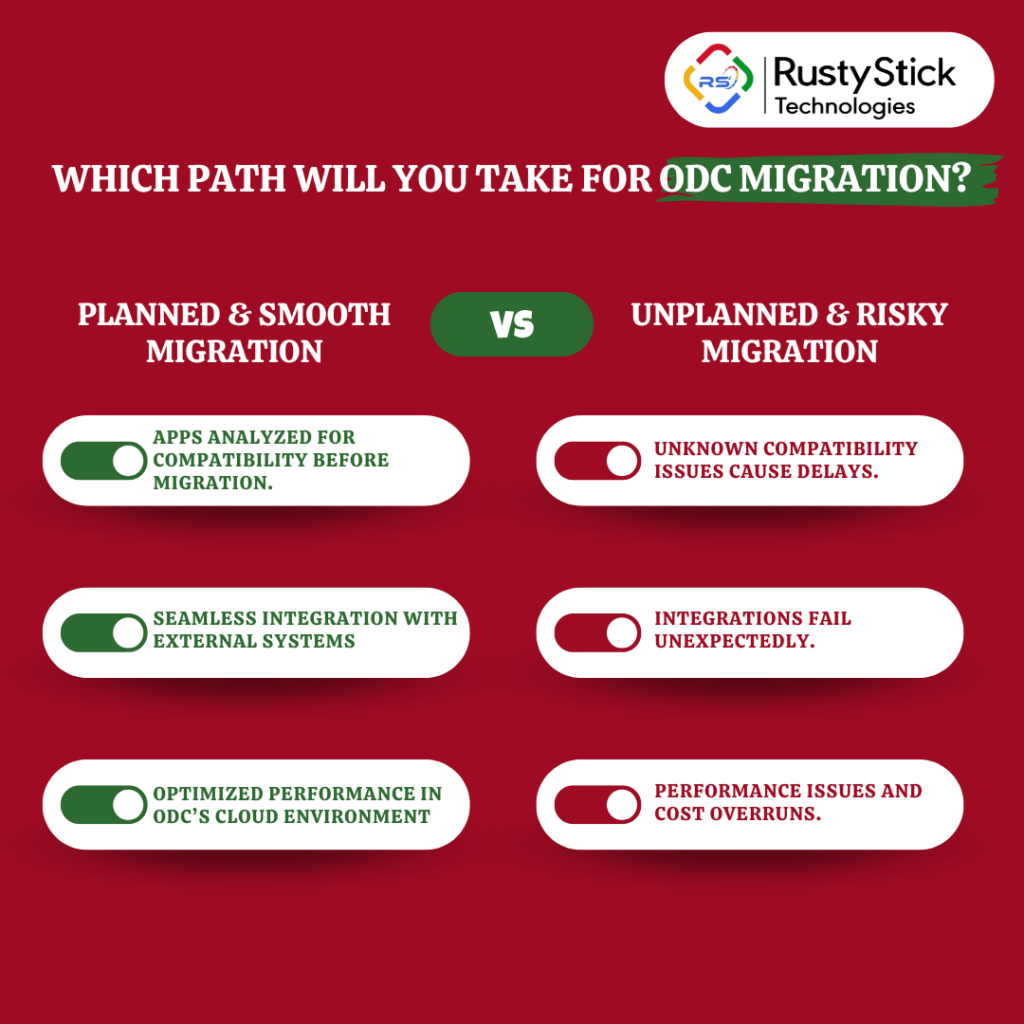
Migrate without a clear strategy, and unexpected issues will surface—delays, broken integrations, performance bottlenecks, and cost overruns. But with the right approach, the transition can be smooth, controlled, and beneficial in the long run.
So, what’s the one step that makes the difference between success and disaster?
A pre-migration application assessment.
Before writing a single line of code in ODC, assessing existing applications is critical. It prevents unnecessary rework, resource wastage, and post-migration surprises.
Let’s break it down.
Understanding the Shift: OutSystems 11 vs. ODC
What Changes in ODC?
Moving to ODC isn’t just about hosting applications in the cloud—it’s about adopting a completely new architecture.
ODC brings:
✅ Cloud-native scalability – Apps dynamically adjust to demand.
✅ Enhanced security – Built-in protections reduce risk exposure.
✅ Modern development practices – A shift toward microservices and containerization.
But with these benefits come challenges. ODC doesn’t support a direct lift-and-shift migration. The architecture and development model are different, meaning applications must be rebuilt, not just moved.
Why Rebuilding Matters
Trying to migrate an OutSystems 11 app as it is would be like forcing a square peg into a round hole. The differences in architecture mean:
🔹 Some legacy dependencies won’t work in the ODC environment.
🔹 Custom-built logic might need rethinking for performance and scalability.
🔹 Integration methods will change, requiring updates to APIs and third-party connections.
Understanding what needs to be rebuilt, what should be optimized, and what can be left behind is critical for a successful migration.
Common Challenges in ODC Migration
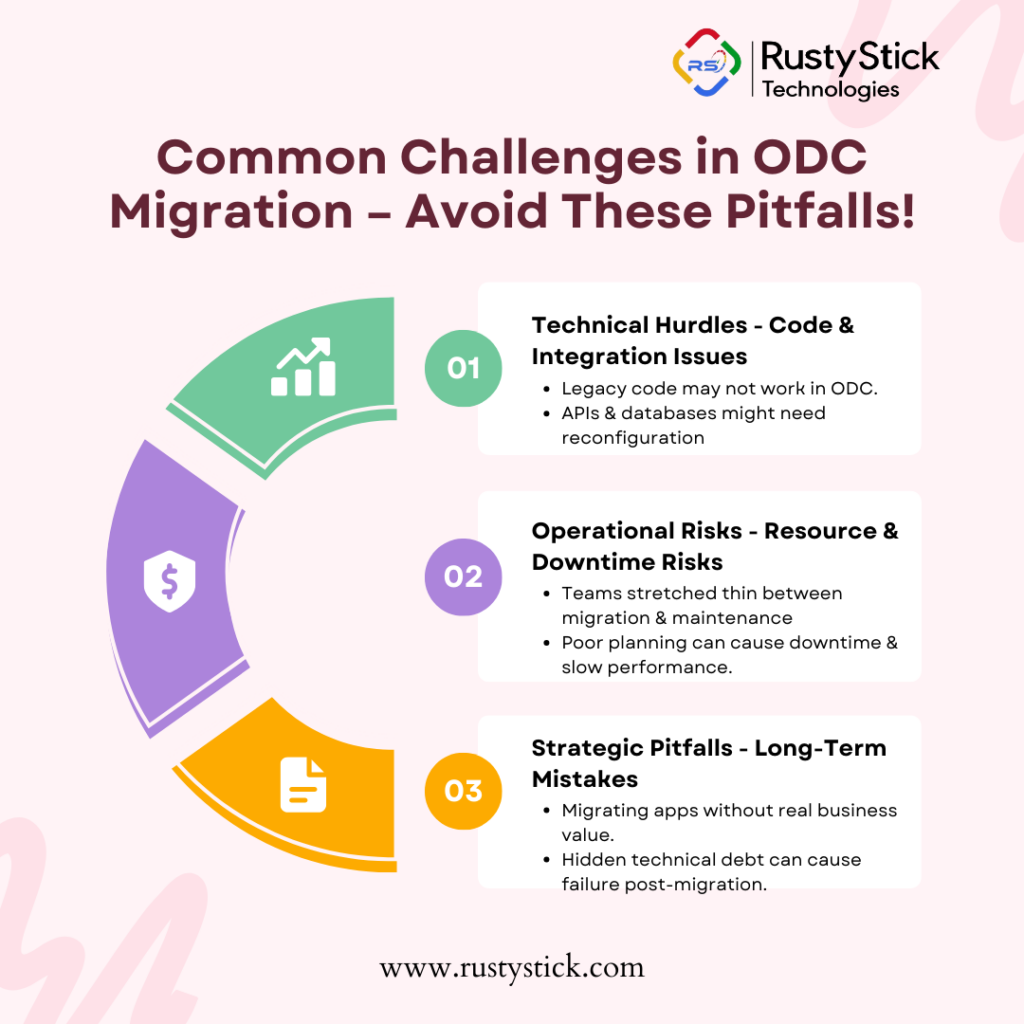
Technical Hurdles
🔸 Legacy Code Dependencies – Some outdated functions or libraries in OutSystems 11 might not be compatible with ODC.
🔸 Integration Complexity – External APIs and databases must be reassessed for compatibility.
Operational Risks
🔸 Resource Allocation – Balancing migration efforts with maintaining current systems can stretch teams thin.
🔸 Business Disruptions – A poorly planned migration can cause downtime, slow performance, or impact users.
Strategic Pitfalls
🔸 Misaligned Goals – Migrating everything without evaluating business impact can waste time on apps that aren’t worth rebuilding.
🔸 Underestimating Technical Debt – Old workarounds and shortcuts might cause major issues if blindly migrated.
Skipping a structured assessment before migration makes these problems more likely to appear when it’s too late to course-correct easily.
The Critical Step: Pre-Migration Application Assessment
Why This Step is a Game-Changer
A pre-migration assessment is the difference between a controlled, well-planned migration and a costly mess.
Without it:
🚨 Time is wasted rebuilding unnecessary applications.
🚨 Unknown technical debt slows down progress.
🚨 Integrations break, leading to emergency fixes.
With it:
✅ The migration roadmap is clear and prioritized.
✅ Potential risks are identified early, reducing last-minute surprises.
✅ The right applications are rebuilt the right way, optimizing resources.
What the Assessment Covers
🔹 Inventory Audit – List and categorize all existing applications. Which ones need migration? Which ones can be retired?
🔹 Business Value Analysis – Identify applications that deliver the most value and prioritize them.
🔹 Technical Viability Check – Assess dependencies, custom logic, integrations, and performance bottlenecks that need attention.
🔹 Modernization Roadmap – Define a structured migration plan:
- What needs to be rebuilt from scratch?
- What can be refactored for efficiency?
- What needs new integrations or security updates?
Skipping this step is like renovating a house without inspecting the foundation. Everything might look fine at first, but hidden structural issues will surface later—when it’s much harder to fix.
Best Practices for Executing the Assessment
1️⃣ Collaborate Across Teams
Gather insights from IT, operations, and end-users. Everyone has a different perspective on how applications are used and what challenges they face.
2️⃣ Use Data, Not Assumptions
Leverage analytics tools to identify app usage patterns, performance bottlenecks, and dependencies.
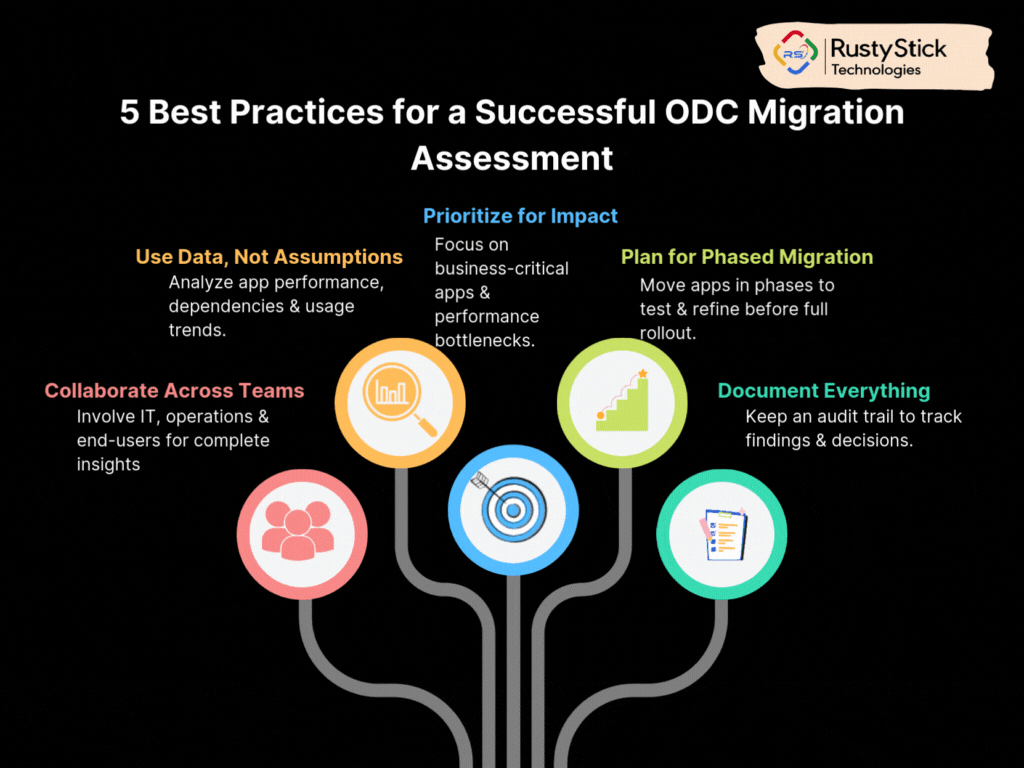
3️⃣ Prioritize for Impact
Start with applications that are:
✔️ Business-critical
✔️ High-impact, but easy to rebuild
✔️ Causing technical debt or performance issues
4️⃣ Plan for Phased Migration
Migrate in small, controlled phases instead of moving everything at once. This allows teams to test and refine the approach.
5️⃣ Document Everything
Create a transparent audit trail to track assessment findings and decisions for future reference.
The Cost of Neglecting This Step
What happens if the assessment is skipped?
🚨 Wasted Time & Budget – Rebuilding apps that aren’t even needed.
🚨 Unforeseen Technical Debt – Performance issues appear after deployment, leading to costly rework.
🚨 Disruptions & Delays – Poor planning leads to missed deadlines and business disruptions.
🚨 Stakeholder Frustration – When things don’t work as expected, trust in the migration process is lost.
It’s always cheaper and easier to address these risks before development starts rather than after.
Conclusion: ODC Migration Needs a Strategy, Not Just Action
ODC migration isn’t just a technical move—it’s an opportunity to modernize applications, improve performance, and future-proof operations.
However, without a pre-migration application assessment, the transition can lead to unexpected costs, technical roadblocks, and unnecessary complexity.
Key Takeaways:
✔️ ODC is not a simple migration—it requires rebuilding applications for a new cloud-native model.
✔️ A pre-migration assessment ensures a clear, efficient migration plan.
✔️ Skipping this step can result in costly mistakes, delays, and business disruptions.
Next Steps:
🛠️ Start by conducting an internal audit of existing applications.
🛠️ Identify applications worth rebuilding vs. retiring.
🛠️ Develop a structured migration roadmap before development begins.
A well-planned migration today prevents problems tomorrow—and sets the foundation for long-term success in ODC.

